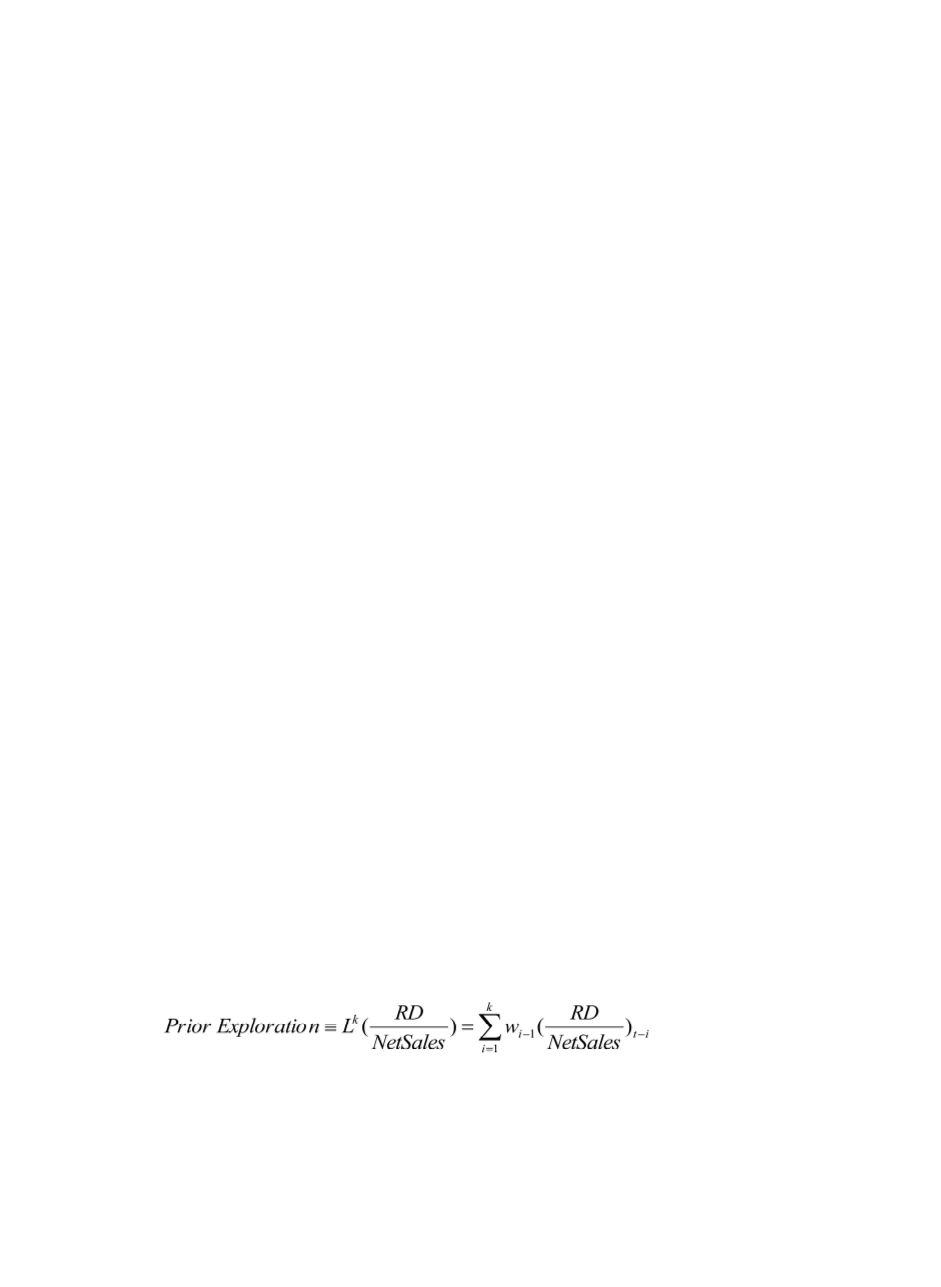

以實質選擇權觀點探討探索性與利用性活動對公司績效之影響:中介效果模型
120
of the global semiconductor billing value obtained from the SIA billing report. The
Herfindahl Index was used to measure industry concentration. Estimated market share was
calculated by dividing the firm’s net sales by the summation of the net sales for all the firms
within SIC 3674 for a given year. The Herfindahl Index was obtained by squaring and then
summing the estimated market shares for all subject firms.
3.4 Analysis of Lag Structure
The effect of exploration on returns may have a lag structure that represents the effect of
previous exploratory activities on current returns. This lag structure is not easy to define, but
techniques have been developed to deal with it.
Lag structure was originally used to investigate the relationship between firm
performance and prior R&D or marketing expenses. The idea was to model these expenses
as the aggregation of expenses over successive periods of time. The aggregation is assumed
to have a specific form and can be determined by one or more parameters. Along with other
variables, this aggregated expense can then be modeled to predict performance. By
minimizing the residual between performance and its predicted value in the model used for
our study, the coefficients of each variable could be estimated and the distribution effect of
prior exploration on performance could be determined (Ravenscraft and Scherer, 1982).
Although most of the literature assumed a constant rate of decline in the R&D influence
on firm performance as the length of the lag increases, this study used a binomial log
structure model (Ravenscraft and Scherer, 1982), which assumed a wide range of plausible
alternative lag shapes such as a bell-shaped distribution in the aggregated prior R&D effect.
This method was initially proposed by Che (1971) and Spitzer (1974) to investigate the
effect of prior marketing expenses on performance. Later, Ravenscraft and Scherer (1982)
adopted it to study the relationship between prior R&D expenses and performance.
Following Ravenscraft and Scherer (1982), after ruling out a contemporary effect in year
zero, we defined the aggregated prior exploration as:
(1)
where
k
is the total lag period, and the weight
w
i
is defined as:


















